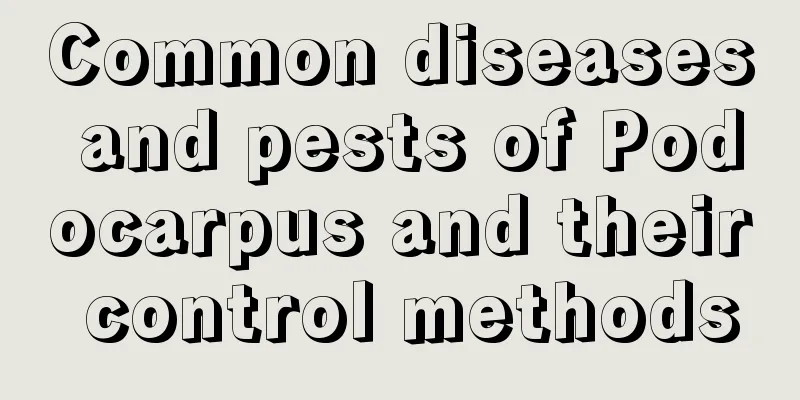Common diseases and pests of Podocarpus and their control methods

Leaf spotSymptoms: There are oval and long light reddish-brown spots on the leaves, surrounded by chlorotic circles, which later expand into large irregular patches with black spots on them. Prevention and control methods: Remove diseased leaves and spray pesticides in time. It can be sprayed with 500 times diluted 50% thiophanate wettable powder. anthraxSymptoms: Small brown spots appear on the leaves at the early stage of the disease, which then expand into round or oval shapes. The spots gradually dry up, and in severe cases the entire plant is infected. Prevention and control methods: First, open the windows for ventilation to reduce indoor air temperature and humidity. Then spray with 1000 times diluted 70% methyl thiophanate wettable powder, or spray 70% methyl thiophanate 60% anthrax, fumei, multi-bacterium, etc. to prevent the disease from spreading further. Red SpiderSymptoms: Podocarpus is attacked by red spider mites, its leaves fade, its chlorophyll is destroyed, dense small yellow spots and yellow spots appear on the surface, and they gradually shrink, turn yellow, and wither. In severe cases, they fall off and lose their ornamental value. Prevention and control methods: Red spiders often hide on the back of branches, leaves or in densely covered areas. It is easier to catch them manually by using a net. If chemical agents are used for treatment, you can use 20% trichloronate emulsion, add 800-1000 times water, make a solution for spraying. This drug has a good killing effect on adults, nymphs and eggs. You can also add 1000-1500 times the amount of DDT emulsion into water to make a solution for spraying. Scale insectsSymptoms: The damage is widespread, sucking the juice from stems and leaves, causing poor plant growth, and even inducing sooty mold, causing large-scale damage to the leaves. Its peak period is earlier than that of red spider mites, and it often reproduces in large numbers in early spring. Prevention and control methods: When the number is small, use a brush to remove it. In addition, you can also use 800-1000 times diluted Supusha for spraying. Mixing a certain amount of furadan into the culture soil has a preventive effect, but the efficacy is only three months. |
<<: Diseases and prevention methods of cockscomb
>>: Lupine Diseases and Prevention Methods
Recommend
How does the copper coin grass survive the winter? Will the hydroponic copper coin grass die in the winter?
1. How to survive the winter 1. Pay attention to ...
How to plant gray manglietia
Growth environment In terms of light, the gray ma...
How to plant perilla seeds
Perilla seeds are generally harvested in late Sep...
Cultivation methods and precautions of succulent pineapple
1. Breeding methods 1. Temperature: The most suit...
When is sugarcane ripe and when to plant it?
1. Maturity Time It usually matures around Octobe...
Before winter, water the flowers with "it", the soil will not become lumpy and the plants will grow vigorously.
Many friends may wonder, can we just ignore the p...
The meaning of white palm
1. Meaning The flower language of white calla lil...
What vegetables are suitable for growing at the south wall?
What vegetables are good to grow at the south wal...
What to do if strawberries don't bear fruit
Not yet old /p> In fact, when growing strawber...
The difference between pickerel grass and raindrop flower
What is Yujiuhua The raindrops are an annual aqua...
Will newly planted succulents die if they are watered?
1. Will I die? There is no need to water newly pl...
Cultivation methods and precautions of sand apple
1. Maintenance methods 1. Substrate selection: Sa...
How to propagate roses
1. Sowing seeds 1. This method is only applicable...
What fertilizer to use for garlic
The growing period of garlic is more than 8 month...
How many times should roses be watered in summer?
1. How many days should I water? 1. Outdoors: The...









